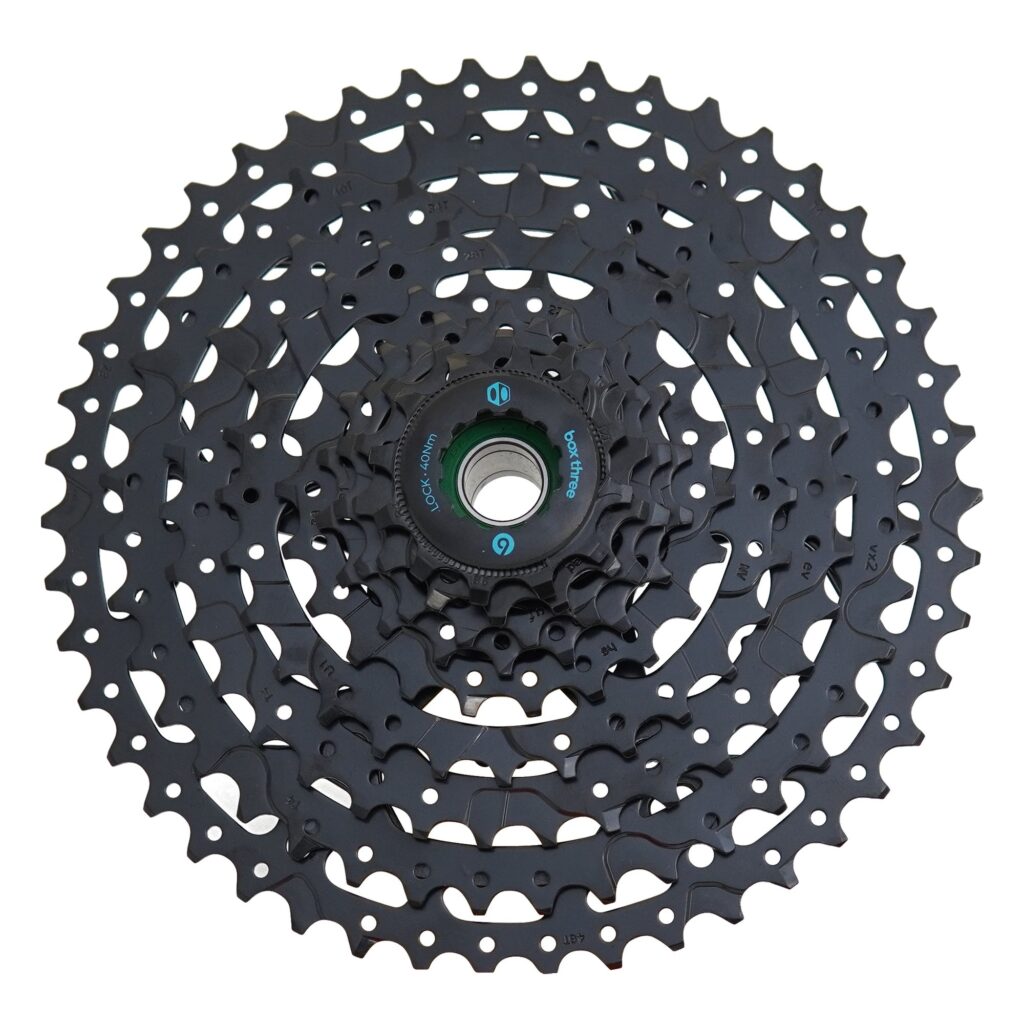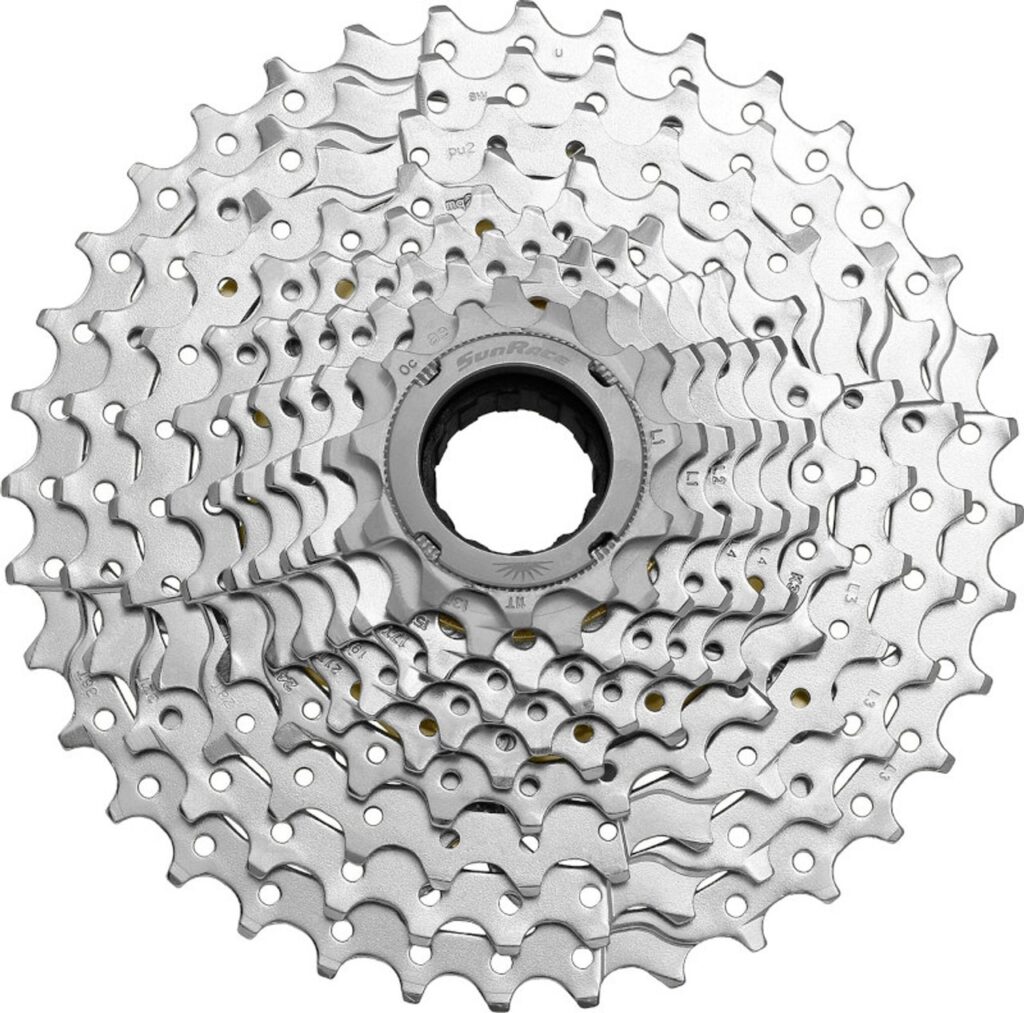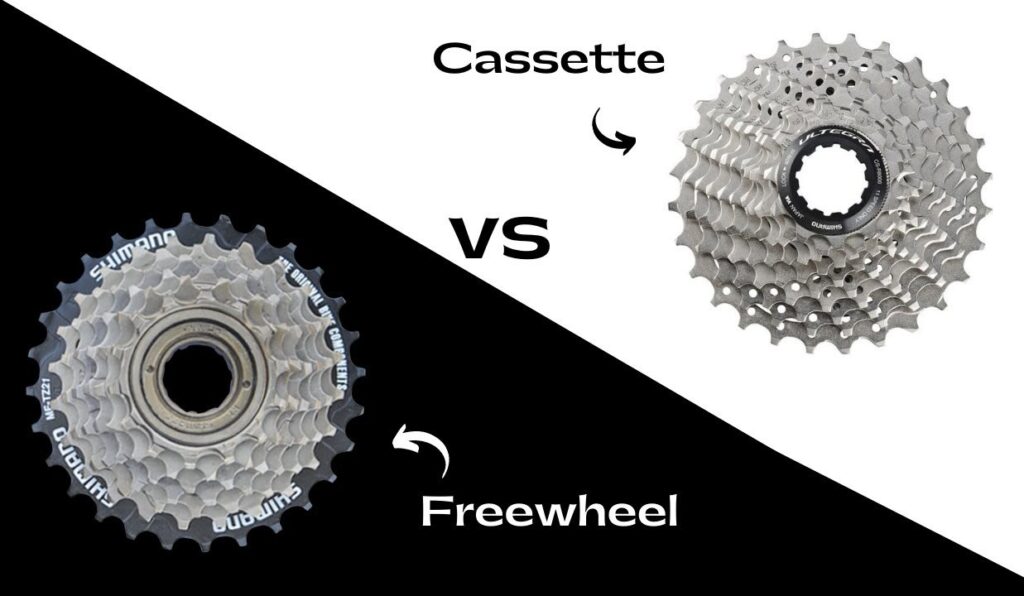If you’re getting into the world of e-bikes, terms like “cassette” and “freewheel” can sound a bit confusing. But don’t worry—you’re not alone! Understanding e-bike cassette vs freewheel for making the right choice for your ride. Whether you’re upgrading your current e-bike or buying a new one, this guide will help you grasp the basics and choose the best setup.
We’ll explore what each part does, why they matter, how to tell them apart, and most importantly, how to decide which one suits your needs. Let’s gear up and get rolling!
Table of Contents
Table of Contents
What Is a Cassette?
A cassette is a cluster of sprockets (gears) mounted on the rear wheel hub of your e-bike. It works with a freehub body, which is built into the rear wheel. When you pedal, the chain moves over the cassette, helping you shift gears smoothly and efficiently.

Key features of a cassette:
- Mounted on a freehub
- Usually has more gears (up to 12-speed)
- Allows smoother gear shifting
- Better for higher torque and power
- Compatible with modern multi-speed systems
Because cassettes are a more modern innovation, they’re commonly found on mid-range to high-end e-bikes. They are designed to support higher performance and are great for riders tackling steep climbs or long-distance rides.
What Is a Freewheel?
A freewheel looks similar to a cassette but functions differently. It has its own built-in ratcheting mechanism and screws directly onto the rear wheel hub. This older system is commonly found on entry-level or older e-bikes.

Key features of a freewheel:
- Built-in freewheel mechanism
- Fewer gears (usually 5 to 7-speed)
- Simpler and more affordable
- Easier to replace but not as efficient
- Better suited for casual or urban riding
Freewheels are still a viable option for riders who prefer simplicity and cost-effectiveness. They’re also great for bikes that are used for short commutes or leisurely weekend rides.
E-Bike Cassette vs Freewheel: The Key Differences
Let’s break it down further.
| Feature | Cassette | Freewheel |
|---|---|---|
| Mounting | Slides onto a freehub | Screws onto rear hub |
| Gear Range | More gears (up to 12) | Fewer gears (5 to 7) |
| Gear Shifting | Smoother and faster | Less precise |
| Pedal Efficiency | Higher | Lower |
| Weight Distribution | Even and stable | Rear-heavy |
| Torque Handling | Better | Less efficient |
| Maintenance | Long-term reliable | Simpler but may wear faster |
So, when you’re comparing E-bike cassette vs freewheel, you’re looking at a balance between performance, cost, and ease of maintenance. For riders who value durability, range, and smoother transitions, a cassette is often the preferred choice.
How to Identify Which One Your E-Bike Has
Here’s a quick way to tell if your e-bike uses a cassette or a freewheel:
- Cassette: Look for a lockring and splines on the hub. If the gear cluster slides off the freehub, it’s a cassette.
- Freewheel: If the gear cluster screws on and has a threaded hub, it’s a freewheel.

Still unsure? Check your e-bike manual or ask a local bike mechanic. You can also try removing the rear wheel and examining the mechanism closely. Knowing what you have is the first step toward making smart upgrades and replacements.
Which Is Better for Your E-Bike?
Choosing between an e-bike cassette vs Feewheel depends on your needs and riding style. Each has its pros and cons, and it really comes down to how and where you ride.
Go for a cassette if:
- You want better gear shifting performance
- You ride on hills or need more gear options
- Your e-bike has a powerful motor (higher torque and load capacity)
- You plan to upgrade your bike transmission system
- You prefer newer technology and better efficiency
Stick with a freewheel if:
- You ride casually or on flat terrain
- You’re on a budget
- Your e-bike is single-speed or low-power
- You prioritize easy DIY maintenance
- You own an older or entry-level bike
Gear Ratios and Sprockets: Why They Matter
Gear ratios affect how hard or easy it is to pedal. A higher number of sprockets gives you more gear choices. That means better control over your speed and power, especially when going uphill or riding long distances.
Cassettes generally have more sprockets (8-12), offering a smoother range of gear options. Freewheels usually come with 5-7 sprockets, giving you fewer choices and bigger jumps between gears.
More sprockets also allow for finer tuning of cadence and pedal force, which translates to better pedal efficiency and less rider fatigue. It’s especially noticeable on steep climbs or when riding with cargo.
Hub Compatibility and Installation
When choosing or upgrading, make sure your rear wheel hub is compatible with the gear system you plan to use.
- Cassette installation requires a freehub-compatible rear wheel.
- Freewheels need a threaded hub.
If you switch from a freewheel to a cassette, you might need to replace the rear wheel, since each uses a different hub design. Freewheels screw directly onto a threaded hub, while cassettes require a freehub body to slide onto. These two systems are not interchangeable, so unless your current wheel is compatible with a cassette’s freehub mechanism, you’ll likely need a new rear wheel to make the switch. It’s also worth noting that cassette systems typically require specific tools for installation and removal, like a lockring tool and chain whip.
Always double-check with your e-bike’s specs or consult with a mechanic before making a change. A mismatched setup can lead to performance issues or even damage.
E-Bike Drivetrain and Performance Impact
The e-bike drivetrain is a key part of your riding experience. It plays a central role in how power is delivered from your pedals to the wheels. When comparing cassette and freewheel setups, drivetrain performance can differ significantly.
Cassettes tend to offer smoother, quicker gear transitions and more efficient torque handling, making them ideal for hilly or high-performance riding. Freewheels, on the other hand, are simpler and easier to maintain but may deliver slower gear shifts and reduced pedal efficiency, especially under heavy loads or steep climbs.
Understanding these differences helps you choose a drivetrain that aligns with your e-bike usage. A good drivetrain setup ensures:
- Smoother rides
- Less wear on parts
- Better E-Bike Chain Maintenance over time
- Efficient power transfer
A well-maintained drivetrain not only boosts your e-bike’s lifespan but also enhances ride quality. Cassettes tend to integrate better with mid-drive motors due to their superior torque handling. Meanwhile, freewheels are more common with hub-drive systems where high torque isn’t as critical.
Single-Speed vs Multi-Speed: What to Know
- Single-speed e-bikes are simpler, require less maintenance, and often use freewheels. They’re great for flat city rides or short distances.
- Multi-speed e-bikes usually rely on cassettes for better performance and versatility. These are ideal for varied terrains and riders who want more control.
Multi-speed setups give you the flexibility to handle different terrains, from steep hills to open roads. They also improve your ability to manage motor assistance levels, making your e-bike feel more natural to ride.
Our Recommendation: Cassette or Freewheel?
For most riders, especially those who want performance and longevity, the best cassette for an e-bike will outperform a freewheel. It offers smoother shifting, better power transfer, and supports more advanced riding styles.
But if you’re just starting out, ride occasionally, or are budget-conscious, the best freewheel for e-bike setups still offer reliable value. They are easier to service at home and require fewer tools and less experience.
When in doubt, think about your:
- Terrain
- Budget
- E-bike motor power
- Future upgrade plans
- Maintenance preference
Evaluate what kind of riding you enjoy most and what your bike is equipped to handle.
Conclusion
Now you know e-bike cassette vs freewheel. and hopefully, it’s a lot clearer than when you started. The right choice depends on your riding style, goals, and e-bike specs. Whether you opt for a cassette or stick with a freewheel, understanding how your e-bike gear system works puts you in the rider’s seat—literally and figuratively!
Learning about the components of your e-bike empowers you to make smart decisions and enjoy a smoother, more efficient ride. A little knowledge goes a long way in keeping your bike in great shape and your rides enjoyable.
Got questions about your e-bike’s drivetrain? Drop them in the comments or visit your local bike shop. Ride safe, stay informed, and enjoy every pedal-powered journey!








